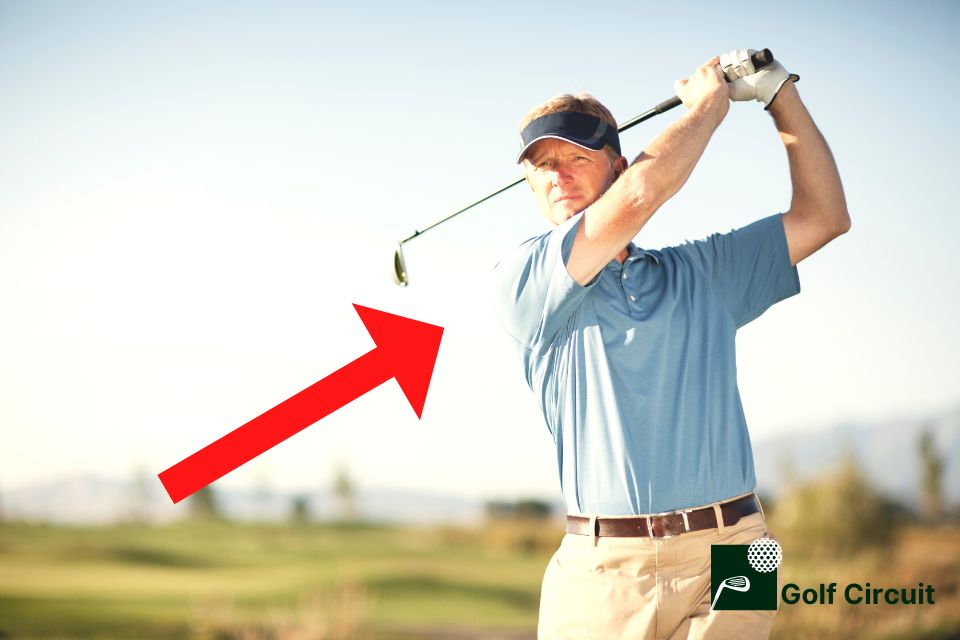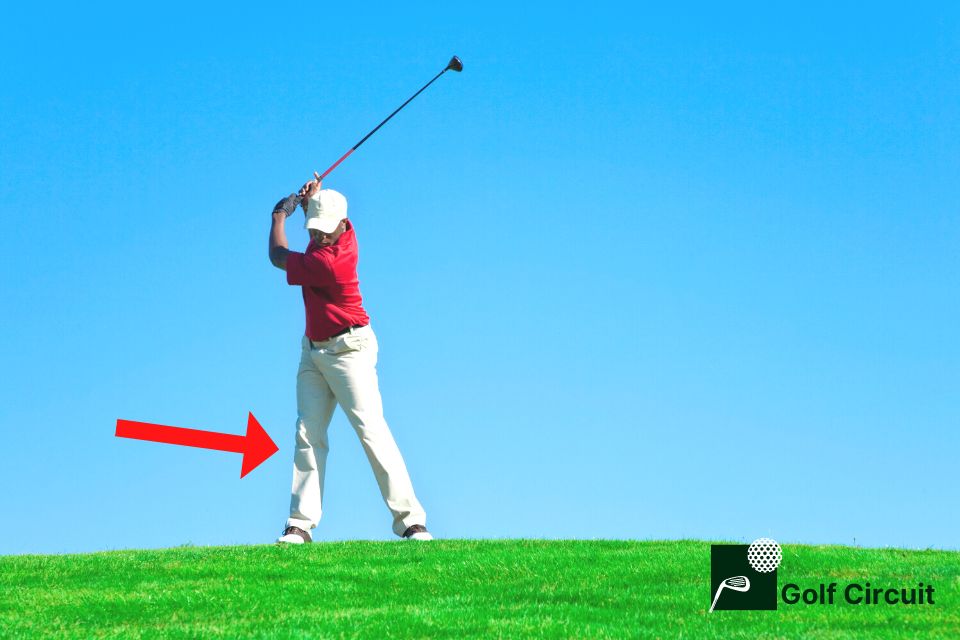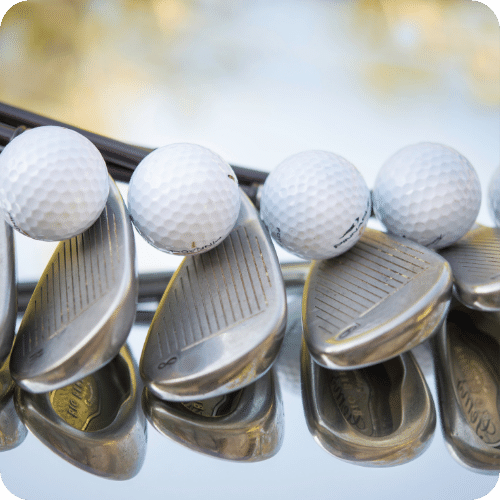5 Simple Steps: How to Shallow the Golf Club


Meet Jake
Jake was a competitive golfer for over a decade dating back to the days of being the Captain of his high school golf team. He has played more than 200 courses across 32 different states in the US. Now semi-retired, Jake continues to golf 3-4 days a week with a current 2 handicap, gives golf lessons to his friends and family, and provides a wealth of knowledge to Golf Circuit from his competitive playing days. Jake combines practical expertise with technical knowledge to create golfing strategies and training techniques for both beginners and scratch golfers.
Most amateur golfers recognize the importance of shallowing the club in the golf swing but struggle to do so after taking dozens of lessons and watching countless instructional videos online.
Although only a select few golfers master this enigmatic move, the benefits it provides for the rest of your swing are substantial. It stands to reason that emulating the best golfers in the world could help you improve your own game.
In this article, we will discuss how to shallow the golf club.
How Do You Shallow the Golf Club?

You use your hips rotation force to make your club travel a steady path to the ball rather than flinging it with your arms along a steep path.
If you can pull that off, you’ll get more distance and precision out of every swing.
One thing to watch out for is using your body in ways that don’t feel natural or right to move the club into a relatively shallow position.
Many golfers’ downswings are overly steep, which causes the club head to swing at an incorrect angle. You can only hit the golf shots you want when you land on the proper plane during your swing.
In the past, I have tried to move the club into the right slot by swaying away from the ball and standing up in the swing. Doing that can complicate your swing and make it more difficult to make solid contact.
Learn how to shallow the club properly by following these instructions.
1. Relax Your Right Arm

An overly rigid right arm is a common trait among right-handed beginners. If you want to lift your chest with your left arm, you must pull your right arm away from your body on the backswing.
When you relax your right arm, you get more flexibility in your backswing. Therefore, you can set up the club in a more advantageous position and let your rotation direct your club head along a gentle path to the ball.
If your right arm is too rigid, your striking position will be too steep, and you will increase your likelihood of missing the target.
2. Move Hands Inward
Rather than taking your club head straight back or away from your body, allow it in and around your body. With this move, you can shorten your downswing.
The direction the hands are moving in has the most significant impact on how much the shaft shallows during the transition, even though there are other considerations at play.
You’ll end up with an over-the-top pattern if you’re gripping the club too tightly, blocking the shallow movement. It’s the same deal if you’re in a rush to rotate your upper body at the start of your downswing; the ball won’t have time to shallow.
3. Hip Flexion at Its Fullest

Having your hips rotate is key to an excellent shallow golf swing. It enables you to maximize the force of your backswing and downswing. Furthermore, it directs you on how to take the shot.
You won’t be able to get your club into a shallow landing position at the peak of the downswing until you rotate your hips enough. That implies you’ll either generate a steep striking angle or have a more challenging time correcting the swing plane. Otherwise, you won’t be able to align your hands for a strike.
4. Shallow the Shaft
Correcting a shallow shaft downswing will be difficult if you can’t get it at the top of your swing. When you achieve this position in your golf swing, the clubhead should be behind your back, not above your head.
By rotating your hips, you’ll get the club head to a more appropriate height for directing it toward the ball.
5. Trail Side Tilt

Tilt your trailing leg toward your lead leg as you start your downswing. That does more than just set off a tremendous leg drive that gets you the best possible distance. It also helps you align the clubhead properly for a strike.
Repeating this ‘pumping’ motion can train your muscles to assume the proper shallow position for swinging the club.
It may seem pointless, considering that you don’t swing the club this way, but if you practice with an overblown feel, you can find a suitable ground when you practically put it into your swing.
A training aid will frequently assist in simulating the move necessary to shallow the golf club during the downswing. Most of the available aids are excellent in giving you instantaneous feedback on how well you are shallowing the club.
How Can I Shallow My Golf Swing and Hit the Ball Farther?
Flatten the club during the backswing if you want to hit the ball further with less club angle. You’ll be able to bend and release more effortlessly, keep your swing speed, and prevent slices, which will fly far shorter distances than draws if you can get the club to a horizontal plane.
If you want to have a downswing that is as high as, if not higher than, your backswing, you will hit the ground before the ball.
Most golfers compensate for this by making a wide variety of swing adjustments, including extending their arms earlier in the swing or rising higher at the top because their brain knows this is the direction the club is heading.
For various reasons, all of these moves are inconvenient, particularly if you want to maximize the distance of your swing. The downswing slows if a golfer extends or lifts their body too early to alter the club’s direction.
As swing speed decreases, so does the amount of force you impart to the golf ball and thus the distance it travels. Working on a shallower club also prevents over-the-top swings that result in poor-performing ballooning slices instead of a smooth, straight fade.
The distance of a slicing shot is usually less than that of a drawn one, and since a shallower club will come from the inside, you’re more likely to hit a draw than a slice.
If your downswing is becoming too steep, consider relaxing your right arm and placing it behind you on the backswing. Your chances of naturally shallowing the shaft on the downswing and hitting more accurate swings will significantly improve if you do this.
Why Am I Unable to Shallow the Club?
A firm grip or an inside-in takeaway may prevent you from shallowing the club. With an inside-in takeaway, you’ll have your backswing overly shallow, and if you try to correct this by shallowing it, you’ll end up with hooks.
One of the sensations you want to seek out when you transition from the backswing to the downswing is the hunching of the wrists, which moves the right palm upwards. A firm grasp or a lack of wrist mobility will make this more difficult.
It would help if you also watched out for an inside-in takeaway. If you take the golf club back with your hands too far inside of your body, you will bring the club into an inherently shallow placement.
Your mind knows this position will not synchronize with the ball on the downswing; therefore, your natural inclination will be to steepen the club on the downswing to correct that.
Practicing a takeout that is less on the inside is essential to make the club steeper at the top of the swing. That way, you won’t have any doubts about shallowing the club to improve your position.
How Can I Make My Golf Swing Flatter?
If you want to make your golf swing flatter, you should practice getting the clubhead level with the ground at the peak of your swing. To achieve this, lower the trailing arm and let the wrists descend the club head closer to the ground.
The motion should originate in the wrists and trail arm rather than the body as it may induce other swing flaws.
You may perfect your flat swing by using a wall drill. It is a fantastic way to hone this skill. Here is how you should do it:
- Take your place at the set-up as you would for an ordinary address, with your back to a wall, preferably outside, since you don’t want to scratch your living room walls paint.
- Bring your club up to the peak of your backswing and continue swinging it until it makes contact with the wall behind you.
- As you gradually start the swing, ensure that your club head constantly slides down the wall while retaining touch with it. Do this until your club is almost parallel to the ground.
The training exercise should make you feel like the club lags behind you instead of getting steeper. If you do it often, it will help you flatten your swing.
The Lag Shot 7 iron is one golf tool we would recommend to practice making your golf swing flatten.
Can a Golf Swing Be Overly Shallow?
Yes, a golf swing can be excessively shallow, and players who do so typically end up with slices and right misses because they compensate by coming over the top.
To comfortably shallow the club, try focusing on a takeout less from the inside and more on-plane. Because of the steep in-to-out direction, an excessively shallow swing will undoubtedly result in a hook.
Nevertheless, the opposite happens for most individuals as they perform exaggerated over-the-top moves to counteract the shallow angle. Regrettably, coming over the top will result in a slice.
An ideal golf swing starts with the club at a steeper angle at the peak of the backswing and transitions to a shallower angle on the downswing.
Theoretically, you may assume that to shallow the club correctly, you must modify the downswing, but in reality, the reverse is usually true. What you do in the backswing significantly impacts how your club behaves in the downswing. Therefore, you must evaluate your backswing to be on the right plane in your downswing.
Most golfers who experiment with shallowing out the club wind up trying to do too much on the downswing. Do not overcorrect since this will feel like you are pulling down on the club. You can trust gravity to take care of things for you.
If you’re in the appropriate position, have your left wrist in the right place, and your body weight uniformly spread at the peak of your swing, gravity will take care of the rest on its own.
Frequently Asked Questions
Most golfers find it challenging to shallow a golf club. Here are the most common questions asked by people seeking to shallow golf clubs.
What will happen if I make an overly shallow swing?
You can’t move the weight of your back leg to the front, and you won’t hit the ball with your weight behind the club head if your swing isn’t strong enough.
When you strike the ball from that stance, you have your clubface open at contact, which can lead to a push or a slice.
Should I stand tall when swinging a golf club?
Whereas a straight back is preferable for this swing, standing upright on the ball at hit will not be ideal. An open clubface might result from a stance in which the player stands firmly without rotating their hips.
What is a shallow move in golf clubs?
It’s an action that places the club head on the proper plane as it advances the ball and permits accurate, solid contact. Nevertheless, producing this shallowing action is much more complicated than it sounds. Many amateur golfers struggle to get the club shallow enough and on the right plane during the downswing.
Final Thoughts
It’s challenging to master how to shorten a golf swing since you must work on your stance, backswing, downswing, and rotation.
Once you master the move, you can consistently make solid contact with the ball. However, you must coordinate your hands, arms, and body to achieve a squared-off face upon impact.
When it comes to distance and precision, a shallow attacking angle is better than a steep attack angle because it gives you the most power at impact. We hope the article provides sufficient answers to your question on how to shallow the golf club.







That was really helpfull